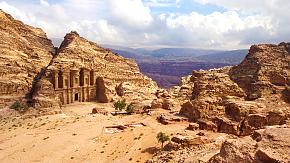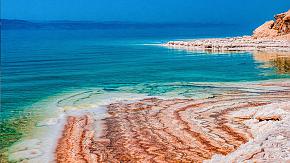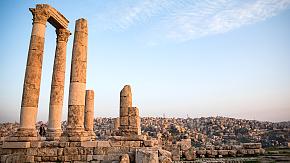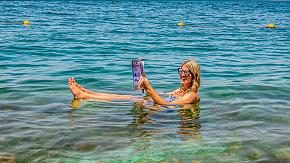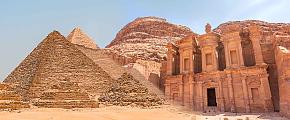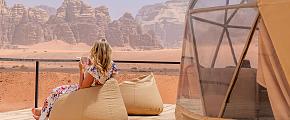Top 8 Places to Visit in Jordan for the First Time
Exploring Jordan for the first time is like stepping into a land where ancient history meets breathtaking landscapes. From the rose-red city of Petra to the otherworldly desert of Wadi Rum, Jordan offers a rich tapestry of culture, adventure, and natural beauty. Take a trip to Jordan is totally worth it.
Petra
Petra is a historic city that is famous all over the world. It is hidden in a small canyon that runs from the Dead Sea to the Aqaba Strait. As you enter the canyon, steep rock walls and winding canals greet you. The view, which is also known as "a line of sky," is spectacular and beautiful as you look up the canyon. It looks like a blue ribbon. You must cross a mountainous area with numerous rock-built houses and rock-cut graves on the slopes around you before entering the canyon. Petra is also known as the "Rose Red City" because the rocks there is a particular shade of red. It's also a very good place to take photos. Along the route of the tour, there are numerous vendors selling postcards, crafts, and exquisite scarves and jewelry. The renowned Khazni Palace can be reached by crossing the narrow canyon. Legend says that this enormous structure, carved into the rock, was where ancient kings gathered various treasures. The palace's massive doors are exquisitely carved with a regimented river pattern, and the walls are covered in numerous original frescoes.
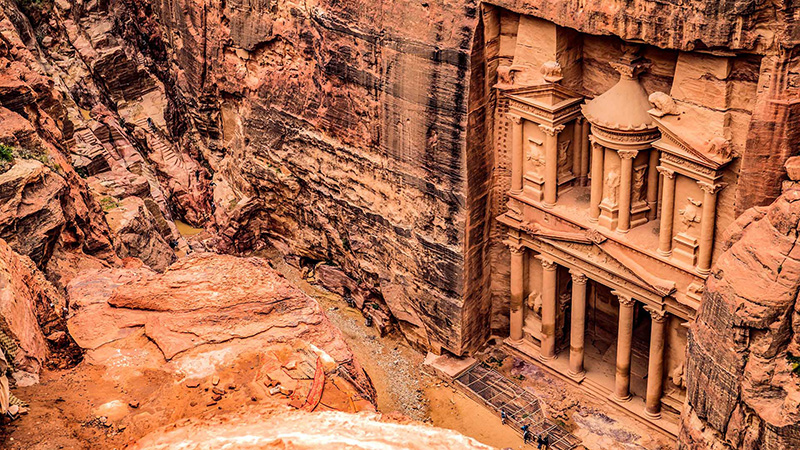 The Treasury from Above, Petra, Jordan
The Treasury from Above, Petra, Jordan
Amman
Amman is located in the central part of Jordan and is the capital of the country. Amman is a true mountain city with 14 mountain ranges around the city, such as Amman Mountain and Mount Hussein. Amman is a historic city with many ancient ruins such as the Roman Colosseum and palaces. Near the Colosseum, there is an amphitheater made of huge stones, which is the famous ancient Thé are Antique. The Thé Antique is not only a world-famous tourist destination, but it is also an important location for organizing various cultural festivals and art events in the neighborhood, and tourists who are interested can pay attention to the information about the relevant activities. Amman is also known for Citadel Hill, the historical location of the Abbasid-Amon Kingdom, where the remaining structures have a distinct Arabian architectural style. There is also a history museum that displays many interesting historical relics. In addition to the historical ruins, Amman has a plethora of art galleries, museums, and mosques, and these majestic old structures and fine collections showcase the wonderful ancient Roman culture.
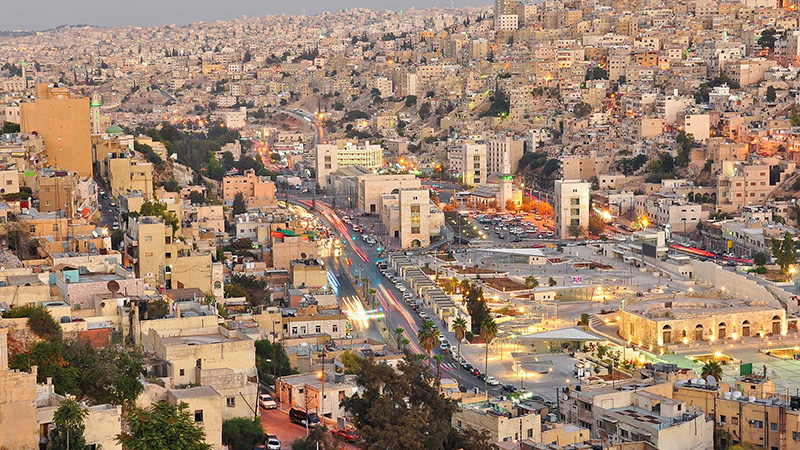 Amman, Jordan
Amman, Jordan
Jerash
Jerash, a northern city in Jordan, has a long history and is home to the famous Ruins of the Roman city of Jerash. Jerash is one of the best-preserved Roman ruins in Jordan. This ancient city was ruled by several dynasties, including Greek, Roman, and Byzantine, so the architecture is a high blend of all civilizations. Entering the monument, you can see the Temple of Water, built in 191 A.D., a large fountain that is a favorite of the local giants. Even though the structure was erected thousands of years ago, the complex carving methods and construction abilities can be seen in the seven massive lion's head-shaped spouts on the walls. The city's economy and culture peaked during the Roman period, with numerous Roman remain spread throughout the hillside, grand temples still standing on top of the hill after a thousand years, massive stone pillars everywhere, broad squares, fountains, and so on. These ruins have stood magnificently for thousands of years, delivering thousands of years of history to the globe and silently conveying the narrative of the rich past and civilization.
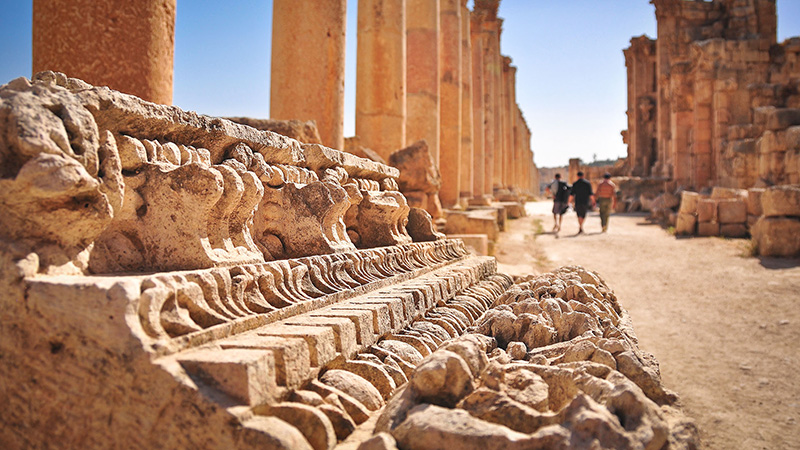 Jerash, Jordan
Jerash, Jordan
Wadi Rum
According to legend, Wadi Rum is located in southern Jordan, close the Arabian border. It is a typical desert city with a never-ending desert. The famed Wadi Rum Protected Area is located here, and it served as the setting for the film "Lawrence of Arabia." The Wadi Rum Protected Area, located in the southern Jordanian province of Ma'an, offers an outstanding desert landscape with a great variety of tall rock formations, high cliffs, unfathomable canyons, and massive rocks. The "Valley of the Moon," called for the surface that mimics the surface of the moon, is one of the most famous sights. The reserve also has historic petroglyphs and inscriptions that describe ancient peoples' daily life spanning millions of years. Aside from the huge desert, the Royal Jordanian Society for the Conservation of Natural and Ecology has constructed a nature reserve here for the Arabian Oryx. The Arabian Oryx became extinct in the wild in 1962, but with the development of successive nature reserves, the Arabian Oryx has successfully returned to its native habitat in the Arabian Peninsula. The Wadi Rum Reserve was designated a World Natural and Cultural Heritage Site in 2011 due to its long history and spectacular scenery.
 Wadi Rum, Jordan
Wadi Rum, Jordan
Dead Sea
The Dead Sea is located on the border of Jordan with Israel and Palestine. Despite its name, it is actually an inland lake. With a surface elevation of -430.5 meters and a depth of -800.112 meters at its deepest point, the Dead Sea is the world's lowest lake. The Dead Sea's shore is known as the "navel of the world" because it is the lowest point on earth. The lake's water is the third most saline body of water on the planet, with 1.6 times more salt than normal seawater. The "Dead Sea" gets its name from the high salt content, which makes it nearly impossible for any living thing to survive in the water. The lake's high salinity can be more irritating than seawater, and if you accidentally let the water fall into your eyes or other vulnerable parts of your body, the intense burning sensation will be unbearable. Visitors are advised not to go into the water at will. Due to the high salinity of the seawater and the salt that is attached to the stones, visitors should wear swimsuits and avoid walking barefoot on the Dead Sea. Instead, they should wear flip-flops or special tourist shoes to avoid being stung by sharp stones.
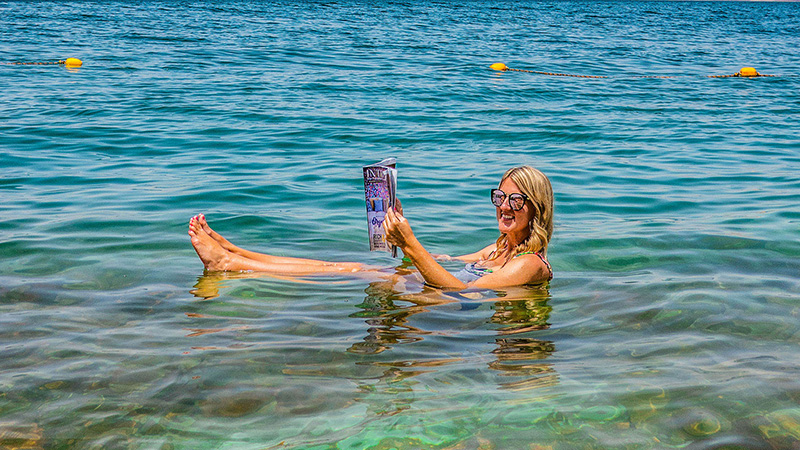 Dead Sea, Jordan
Dead Sea, Jordan
Aqaba
Yakba is on the Red Sea's tip of the Gulf of Aqaba in the south of Jordan. It is at the convergence of the shipping lanes between Asia, Africa and Europe, and its area is decisively significant as Jordan's just seaport, a significant port for exchange traffic and a traveler objective in southern Jordan. Aqaba developed into one of the Roman Empire's most important ports around 106 AD. Aqaba is a desert city that is close to the Red Sea. Because of this, you can see two different types of scenery at the same time. Jordan's seaside resort of Aqaba is known for its luxurious hotels, where you can stay in a large room with floor-to-ceiling windows that let in endless ocean views. The hotel has a swimming pool and a variety of seaside activities for friends and family who are interested in diving, surfing, beach entertainment, and other recreational activities by the sea.
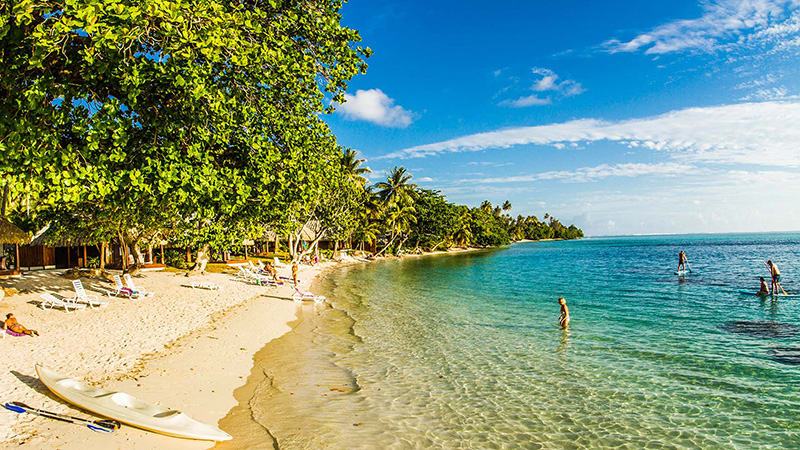 Aqaba, Jordan
Aqaba, Jordan
Mt. Nebo
Near the Dead Sea, Nebo is situated east of the Jordan River. The Bible says that Moses, the man who started Judaism, died here before ascending to heaven. Additionally, Moses holds high positions in Christianity and Islam due to his status as the founder of Judaism. This makes Mt. Nebo is one of Jordan's most sacred sites. On the mountain's western side, Moses' shepherd's staff is represented by the coiled bronze serpent on the shelf of Nebo, a massive cross that hangs on a wall. The main structure on Mount, the Moses Memorial Church at the top of the hill is Nebo. The floor of the congregation is trimmed with themes of hunting, animal cultivation cultivating and different birds and creatures, and ordinary Byzantine mosaics of impeccable craftsmanship. The stunning views of the Dead Sea and the Jordan Valley can be taken from the platform in front of the church. A sense of sacred ritual will be created if the Jordan Valley is illuminated by sunlight that penetrates the clouds and shines on it like a holy light.
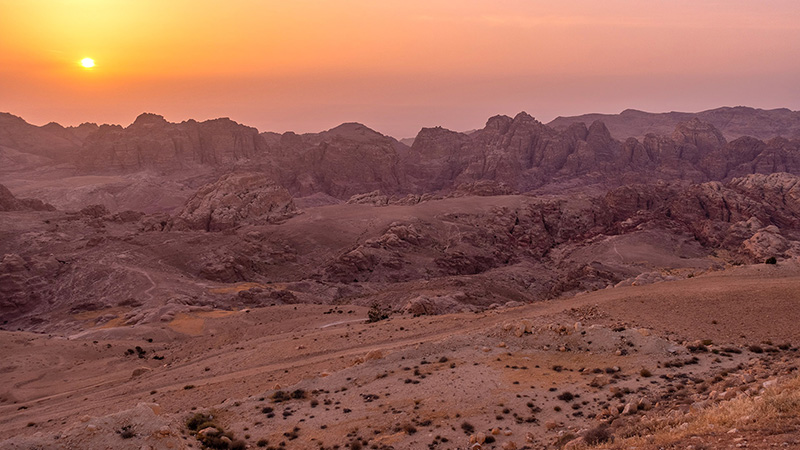 Mt.Nebo, Jordan
Mt.Nebo, Jordan
Umm Qais
Umm Qais is in the northern part of Jordan. It is high in the mountains of the northwest of Jordan and has a view of Israel, the Sea of Galilee, Lake Tiberias, and other nearby sights. The ruins of several famous monuments in the city combine Roman ruins and abandoned Ottoman villages. A theater, cobblestone streets, tombs, and Byzantine churches are among the impressive ruins. The cathedral, built in the sixth century AD, is the city's best-preserved structure. There are also three theaters and three thermal baths. Visitors can take in a stunning view of Jordan, Israel, and Syria by ascending to the highest point of the site. Naturally, there are also views of Mount Hermon, the Golan Heights, and the Sea of Galilee. The city's great civilization and brutal past can be felt through the city's ancient walls as the sun sets on them, reflecting the city's ancient walls for thousands of years.
In Jordan, you can not only enjoy the desert sands and endless galaxy starry sky in the Valley of the Moon, but swim in the Red Sea in Aqaba, watch the newspaper floating in the Dead Sea, explore the ancient rose city of Petra, witness the ancient Roman city of Jerash, etc. Exactly, you will feel the beautiful natural landscape, experience special folk culture and enter the famous historical monuments in Jordan, if you are excited about this wonderful country, please contact us, just simply tell us your interests and needs, and one of our travel experts will create a tailor-made itinerary for you within 24hrs.
Related Posts You May Like
What Our Clients Say
Explore the latest verified reviews of Odynovo's travel services on Tripadvisor, Google, Trustpilot, Product Review and more trusted platforms.

